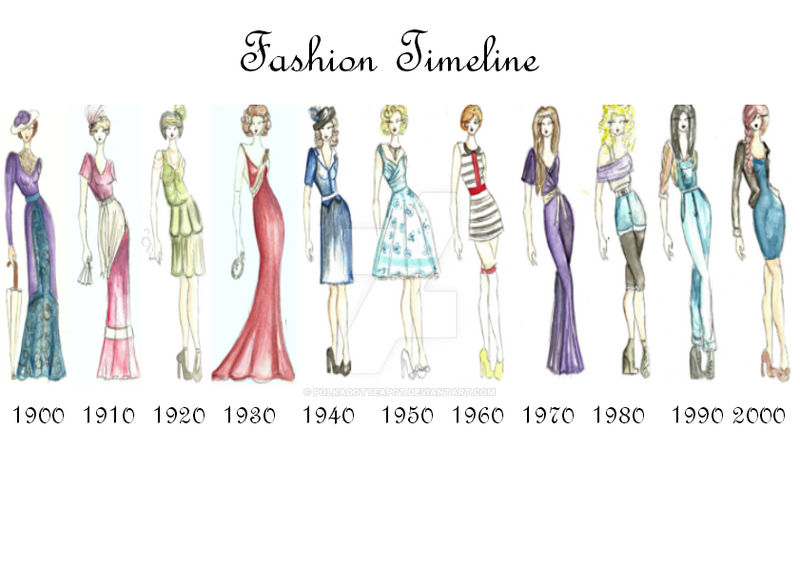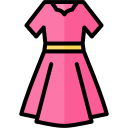The History of Fashion Through the Decades

1920s: The Era of Flappers and Glamour
The 1920s are marked by the emergence of independent women and jazz culture.
- Key Trends: Flapper dresses with short hemlines and embellished details, loose-fitting skirts, and cloche hats were popular. These garments symbolized freedom and rebellion against societal norms.
- Modern Comeback: Flapper-inspired dresses with sequins and fringe details are often seen at formal events and parties, reflecting the elegance of the 1920s.
1930s: Simplicity and Functionality
The 1930s saw a shift toward simplicity and practicality due to the economic impact of the Great Depression.
- Key Trends: Longer hemlines, simple lines, and soft fabrics like chiffon and silk became popular. High-waisted trousers and belted dresses were also in vogue.
- Modern Comeback: High-waisted pants and clean, simple designs have resurfaced in contemporary fashion, emphasizing natural silhouettes and belts.
1940s: Wartime Simplicity and Utility
World War II had a significant impact on 1940s fashion, leading to more practical styles due to fabric rationing.
- Key Trends: Tailored garments with clean lines, longer skirts, and the use of sturdier fabrics. Military-inspired clothing and workwear became popular.
- Modern Comeback: Many elements from the 1940s, like structured coats and tailored trousers, have made a return in modern fashion.
1950s: Elegance and Femininity
The 1950s were characterized by a return to feminine and luxurious styles.
- Key Trends: Full skirts, cinched waists, and colorful fabrics. Designers like Christian Dior made a significant impact with his "New Look."
- Modern Comeback: Full skirts and dresses with defined waists have resurfaced in contemporary fashion, often seen in seasonal collections.
1960s: Fashion Revolution and Counterculture
The 1960s witnessed a fashion revolution driven by social and cultural changes.
- Key Trends: Minimalistic clothing, graphic designs, and short styles like the miniskirt became iconic. Bold colors and innovative patterns were prevalent.
- Modern Comeback: The miniskirt and graphic designs are now frequently observed in streetwear and contemporary fashion.
1970s: Freedom and Self-Expression
The 1970s were all about self-expression and personal freedom.
- Key Trends: Denim, long skirts, and vibrant colors with eclectic patterns. The hippie culture and bohemian styles significantly influenced this decade.
- Modern Comeback: High-waisted jeans and long skirts are once again popular, especially during the summer. Bright colors and diverse patterns have also made a return.
1980s: Excess and Glamour
The 1980s were marked by excess and bold personality in fashion.
- Key Trends: Tight-fitting pants, bright colors, and shiny fabrics. Athletic wear and street styles became prevalent.
- Modern Comeback: Tight pants and vibrant colors are now staples in modern fashion and street style.
1990s: Nostalgia and Simplicity
The 1990s emphasized simplicity and nostalgic elements in fashion.
- Key Trends: Casual and loose clothing, low-rise jeans, and graphic t-shirts. The influence of pop culture and music was evident.
- Modern Comeback: Low-rise jeans and graphic tees have returned, becoming popular among younger generations.
2000s: Diversity and Fusion
The 2000s focused on diversity and the fusion of styles.
- Key Trends: Casual wear, layered outfits, and various cultural influences. The use of technology in design and production also grew.
- Modern Comeback: Diverse styles and cultural fusions are making a comeback, with young people mixing and matching influences from past decades.
Conclusion
Fashion is ever-evolving, yet the trends and styles of each decade have a significant impact on today’s fashion landscape. The revival of certain trends reminds us that personal style and creativity will always take precedence. By exploring the history of fashion, we can better understand how these influences have shaped the world of fashion we know today.
User Reviews


